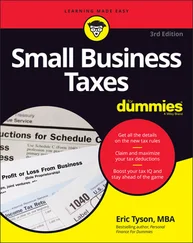The more money you accumulate outside tax-sheltered retirement accounts, the greater the price colleges will charge you. Don’t make the additional error of assuming that financial aid is only for the poor. Many middle-income and even some modestly affluent families qualify for some aid, which can include grants and loans available, even if you’re not deemed financially needy.
Under the current financial needs analysis that most colleges use in awarding financial aid, the value of your retirement plan is not considered an asset. Money that you save outside of retirement accounts, including money in the child’s name, is counted as an asset and reduces eligibility for financial aid.
Also, be aware that your family’s assets, for purposes of financial aid determination, also generally include equity in real estate and businesses that you own. Although the federal financial aid analysis no longer counts equity in your primary residence as an asset, many private (independent) schools continue to ask parents for this information when they make their own financial aid determinations. Thus, paying down your home mortgage more quickly instead of funding retirement accounts can harm you financially for college. You may end up paying higher college prices and pay more in taxes.
 Don’t forgo contributing to your own retirement savings plan(s) in order to save money in a non-retirement account for your children’s college expenses. When you do, you pay higher taxes both on your current income and on the interest and growth of this money. In addition to paying higher taxes, you’re expected to contribute more to your child’s educational expenses (because you’ll receive less financial aid).
Don’t forgo contributing to your own retirement savings plan(s) in order to save money in a non-retirement account for your children’s college expenses. When you do, you pay higher taxes both on your current income and on the interest and growth of this money. In addition to paying higher taxes, you’re expected to contribute more to your child’s educational expenses (because you’ll receive less financial aid).
If you plan to apply for financial aid, it’s a good idea to save non-retirement account money in your name rather than in your child’s name (as a custodial account). Colleges expect a greater percentage of money in your child’s name (20 percent) to be used for college costs than money in your name (5.6 percent). Remember, though, that from the standpoint of getting financial aid, you’re better off saving inside retirement accounts.
However, if you’re affluent enough that you expect to pay for your cherub’s full educational costs without applying for financial aid, you can save a bit on taxes if you invest through custodial accounts. Parents control a custodial account until the child reaches either the age of 18 or 21, depending upon the state in which you reside. For tax year 2020, prior to your child’s reaching age 18, the first $2,200 of interest and dividend income generally isn’t taxed. Over the $2,200 threshold, unearned income is taxed at the relatively high rates that apply to trusts and estates:
Up to $2,600 falls into the 10 percent bracket.
Between $2,600 and $9,450 is in the 24 percent bracket.
Between $9,450 and $12,950 is in the 35 percent bracket.
Above $12,950 is in the 37 percent bracket.
Upon reaching age 18 (or age 24 if your offspring are still full-time students), all income generated by investments in your child’s name is taxed at your child’s rate, which is presumably a lower tax rate than yours.
Education Savings Accounts
 Be careful about funding an Education Savings Account (ESA). In theory, an ESA sounds like a great place to park some college savings. Subject to income limitations, you can make non-deductible contributions of up to $2,000 per child per year, and investment earnings and account withdrawals are free of tax as long as you use the funds to pay for elementary and secondary school or college costs. However, funding an ESA can undermine your child’s ability to qualify for financial aid. It’s best to keep the parents as the owners of such an account for financial aid purposes, but be forewarned that some schools may treat money in an ESA as a student’s asset. These accounts are considered the student’s asset if the student is listed as the account owner and is an independent student.
Be careful about funding an Education Savings Account (ESA). In theory, an ESA sounds like a great place to park some college savings. Subject to income limitations, you can make non-deductible contributions of up to $2,000 per child per year, and investment earnings and account withdrawals are free of tax as long as you use the funds to pay for elementary and secondary school or college costs. However, funding an ESA can undermine your child’s ability to qualify for financial aid. It’s best to keep the parents as the owners of such an account for financial aid purposes, but be forewarned that some schools may treat money in an ESA as a student’s asset. These accounts are considered the student’s asset if the student is listed as the account owner and is an independent student.
One final detail about ESAs. Most investment companies have done away with these accounts since 529 plan account holders (discussed next) may now use withdrawals to pay for K–12 educational expenses. Thus, there are no longer notable differences between the two types of accounts, and the 529 plan allows for saving and investing far greater balances than the ESA.
Also known as qualified state tuition plans, Section 529 plans offer a tax-advantaged way to save and invest more than $100,000 per child toward college costs (some states allow upward of $300,000 per student). After you contribute to one of these state-based accounts, the invested funds grow without taxation. Withdrawals are also tax-free so long as the funds are used to pay for qualifying higher educational costs (which include college, graduate school, and certain additional expenses of special-needs students) and for up to $10,000 per year for K-12 educational expenses. The schools need not be in the same state as the state administering the Section 529 plan.
 As I discuss in the preceding section dealing with Education Savings Accounts, Section 529 plan balances can harm your child’s financial aid chances. Thus, such accounts make the most sense for affluent families who are sure that they won’t qualify for any type of financial aid. If you do opt for a section 529 plan and intend to apply for financial aid, you should be the owner of the accounts (not your child) to maximize qualifying for financial aid.
As I discuss in the preceding section dealing with Education Savings Accounts, Section 529 plan balances can harm your child’s financial aid chances. Thus, such accounts make the most sense for affluent families who are sure that they won’t qualify for any type of financial aid. If you do opt for a section 529 plan and intend to apply for financial aid, you should be the owner of the accounts (not your child) to maximize qualifying for financial aid.
Allocating college investments
If you keep up to 80 percent of your investment money in stocks (diversified worldwide) with the remainder in bonds when your child is young, you can maximize the money’s growth potential without taking extraordinary risk. As your child makes his way through the later years of elementary school, you need to begin to make the mix more conservative — scale back the stock percentage to 50 or 60 percent. Finally, in the years just before your child enters college, whittle the stock portion down to no more than 20 percent or so.
 Diversified funds (which invest in stocks in the United States and internationally) and bonds are ideal vehicles to use when you invest for college. Be sure to choose funds that fit your tax situation if you invest your funds in non-retirement accounts. See Chapter 8for more information.
Diversified funds (which invest in stocks in the United States and internationally) and bonds are ideal vehicles to use when you invest for college. Be sure to choose funds that fit your tax situation if you invest your funds in non-retirement accounts. See Chapter 8for more information.
If you keep stashing away money in retirement accounts, it’s reasonable for you to wonder how you’ll actually pay for education expenses when the momentous occasion arises. Even if you have some liquid assets that can be directed to your child’s college bill, you will, in all likelihood, need to borrow some money. Only the affluent can truly afford to pay for college with cash.
One good source of money is your home’s equity. You can borrow against your home at a relatively low interest rate, and the interest is generally tax-deductible. Some company retirement plans — 401(k)s, for example — allow borrowing as well.
A plethora of financial aid programs allow you to borrow at reasonable interest rates. The Unsubsidized Stafford Loans and Parent Loans for Undergraduate Students (PLUS), for example, are available, even when your family isn’t deemed financially needy. In addition to loans, a number of grant programs are available through schools and the government as well as through independent sources.
Читать дальше

 Don’t forgo contributing to your own retirement savings plan(s) in order to save money in a non-retirement account for your children’s college expenses. When you do, you pay higher taxes both on your current income and on the interest and growth of this money. In addition to paying higher taxes, you’re expected to contribute more to your child’s educational expenses (because you’ll receive less financial aid).
Don’t forgo contributing to your own retirement savings plan(s) in order to save money in a non-retirement account for your children’s college expenses. When you do, you pay higher taxes both on your current income and on the interest and growth of this money. In addition to paying higher taxes, you’re expected to contribute more to your child’s educational expenses (because you’ll receive less financial aid). Be careful about funding an Education Savings Account (ESA). In theory, an ESA sounds like a great place to park some college savings. Subject to income limitations, you can make non-deductible contributions of up to $2,000 per child per year, and investment earnings and account withdrawals are free of tax as long as you use the funds to pay for elementary and secondary school or college costs. However, funding an ESA can undermine your child’s ability to qualify for financial aid. It’s best to keep the parents as the owners of such an account for financial aid purposes, but be forewarned that some schools may treat money in an ESA as a student’s asset. These accounts are considered the student’s asset if the student is listed as the account owner and is an independent student.
Be careful about funding an Education Savings Account (ESA). In theory, an ESA sounds like a great place to park some college savings. Subject to income limitations, you can make non-deductible contributions of up to $2,000 per child per year, and investment earnings and account withdrawals are free of tax as long as you use the funds to pay for elementary and secondary school or college costs. However, funding an ESA can undermine your child’s ability to qualify for financial aid. It’s best to keep the parents as the owners of such an account for financial aid purposes, but be forewarned that some schools may treat money in an ESA as a student’s asset. These accounts are considered the student’s asset if the student is listed as the account owner and is an independent student. As I discuss in the preceding section dealing with Education Savings Accounts, Section 529 plan balances can harm your child’s financial aid chances. Thus, such accounts make the most sense for affluent families who are sure that they won’t qualify for any type of financial aid. If you do opt for a section 529 plan and intend to apply for financial aid, you should be the owner of the accounts (not your child) to maximize qualifying for financial aid.
As I discuss in the preceding section dealing with Education Savings Accounts, Section 529 plan balances can harm your child’s financial aid chances. Thus, such accounts make the most sense for affluent families who are sure that they won’t qualify for any type of financial aid. If you do opt for a section 529 plan and intend to apply for financial aid, you should be the owner of the accounts (not your child) to maximize qualifying for financial aid.










